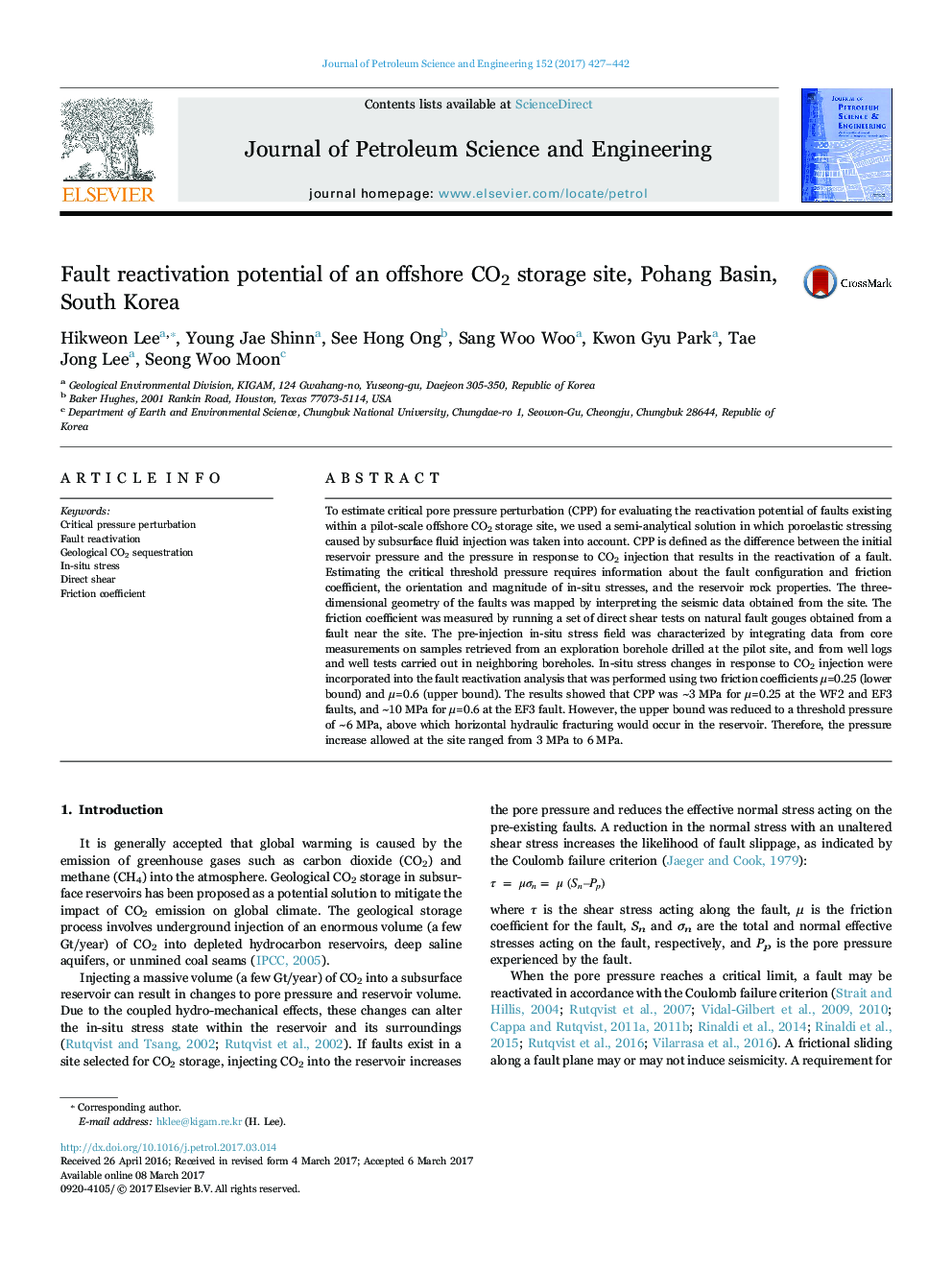| Article ID | Journal | Published Year | Pages | File Type |
|---|---|---|---|---|
| 5484285 | Journal of Petroleum Science and Engineering | 2017 | 16 Pages |
Abstract
To estimate critical pore pressure perturbation (CPP) for evaluating the reactivation potential of faults existing within a pilot-scale offshore CO2 storage site, we used a semi-analytical solution in which poroelastic stressing caused by subsurface fluid injection was taken into account. CPP is defined as the difference between the initial reservoir pressure and the pressure in response to CO2 injection that results in the reactivation of a fault. Estimating the critical threshold pressure requires information about the fault configuration and friction coefficient, the orientation and magnitude of in-situ stresses, and the reservoir rock properties. The three-dimensional geometry of the faults was mapped by interpreting the seismic data obtained from the site. The friction coefficient was measured by running a set of direct shear tests on natural fault gouges obtained from a fault near the site. The pre-injection in-situ stress field was characterized by integrating data from core measurements on samples retrieved from an exploration borehole drilled at the pilot site, and from well logs and well tests carried out in neighboring boreholes. In-situ stress changes in response to CO2 injection were incorporated into the fault reactivation analysis that was performed using two friction coefficients μ=0.25 (lower bound) and μ=0.6 (upper bound). The results showed that CPP was ~3 MPa for μ=0.25 at the WF2 and EF3 faults, and ~10 MPa for μ=0.6 at the EF3 fault. However, the upper bound was reduced to a threshold pressure of ~6 MPa, above which horizontal hydraulic fracturing would occur in the reservoir. Therefore, the pressure increase allowed at the site ranged from 3 MPa to 6 MPa.
Keywords
Related Topics
Physical Sciences and Engineering
Earth and Planetary Sciences
Economic Geology
Authors
Hikweon Lee, Young Jae Shinn, See Hong Ong, Sang Woo Woo, Kwon Gyu Park, Tae Jong Lee, Seong Woo Moon,
